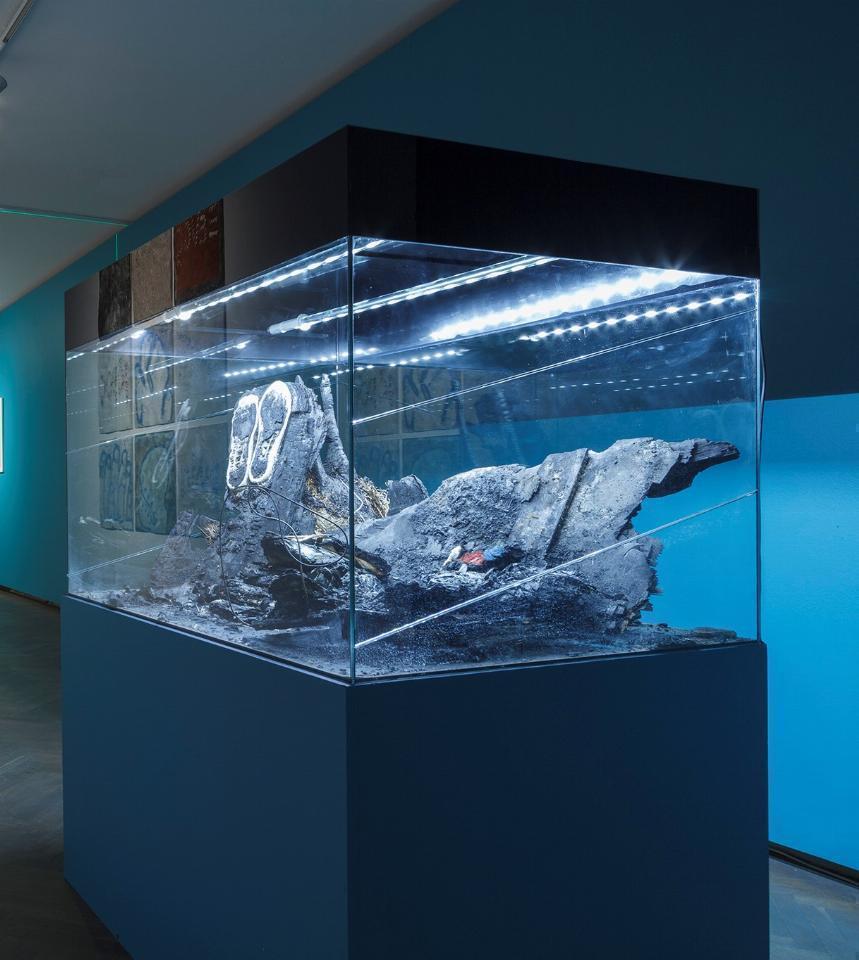Diana Lelonek
Spring in the Józef Bem Housing Estate
Diana Lelonek, Spring in the Józef Bem Housing Estate, 2020installation of unique objects found by the artist, glass display case with LED lighting, 120 × 80 × 70 cm
Collection II of the Arsenal Gallery in Białystok. Work purchased by the Arsenal Gallery in Białystok in 2021

In a glass display case with cold LED lighting, Diana Lelonek has enclosed a fragment of a conflagration site. Among the charred objects there are planks, shreds of fabric, nails and twisted wires, fibres, gloves and half-burnt books, including the Penal Code without a cover. The eye is drawn to the rubber shoe soles embedded in the floor. The sense of smell is important in the perception of the work, the stench of burning surrounding the display. Entitled Spring in the Józef Bem Housing Estate, the installation continues the tradition of Surrealist and Dadaist objets trouvés. The remains of a burnt-down house transferred into the context of an art gallery highlight a difficult socio-economic problem with which Białystok has been grappling for years.
Enclaves of old timber architecture are distinctive to the urban fabric of Białystok. The oldest surviving buildings date from the second half of the nineteenth century. They are a testimony to the times when many Łódź factory owners moved their businesses there, turning Białystok into the “Manchester of the North”. Timber, a cheap and available material, was used to build tenements, public buildings and villas of factory owners and members of the intelligentsia. Timber buildings predominated especially in the districts of Chanajki, Bojary and Dojlidy. A walk through the city reveals many vacant, deteriorating timber buildings. In 2011, the Route of Timber Architecture was created, currently encompassing 28 buildings dating from 1880 to 1947.
The eponymous Józef Bem Housing Estate also has a timber exterior. In recent years, these buildings have been burning down on a regular basis, with apartment blocks constructed in their place. Activists are relentless in their efforts to prove that these conflagrations are not accidental, but a deliberate act that favours the interests of developers and, in a way, the city’s urban development plans. Lelonek’s work refers to historical policy which has no chance of winning against economic interests. The city’s identity and uniqueness is lost among the run-of-the-mill modern housing estates, the creation of which is dictated by the need to utilise and monetise space. The Penal Code fused with the remains of a timber house is an eloquent comment on this situation.
Izabela Kopania
translated from Polish by Klaudyna Michałowicz

PLAN YOUR VISIT
Opening times:
Thuesday – Sunday
10:00-18:00
Last admission
to exhibition is at:
17.30